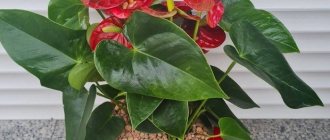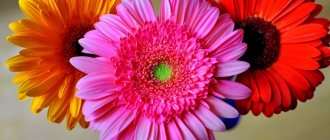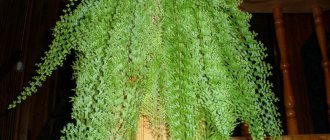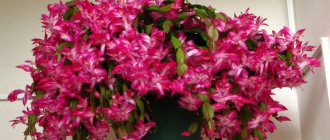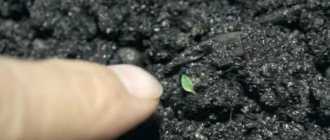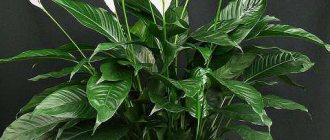Fern is the oldest plant that survived the era of reptiles, witnessed the development of the inhabitants of our planet, and now grows successfully both in nature and in the room. According to gardeners, the interest in the plant can be explained by the beauty of the uneven leaves and the easy care of indoor ferns at home.
Currently, there are about 10 thousand types of ferns, although adherents of indoor plants, naturally, have much fewer species.
On the windows of the house there are the most undemanding and at the same time charming plants.
Indoor fern: description
Indoor fern belongs to the family of vascular spore plants. Indoor ferns are a large group of plants that differ in the shape of their foliage and the shape of the plant itself. There are decorative species whose foliage is carved and cascades down. In other species, the foliage overlaps each other, while in others it is collected in rosettes.
Ferns are an intermediate link between moss, algae and gymnosperms. They have preserved their original structure from ancient times, but were able to adapt to modern living conditions.
Their foliage can be curly, feathery, or many times dissected. The leaves that have just appeared are twisted into a spiral, and as they grow, this spiral unwinds and darkens. The root system of ferns, like many plants, is located in the soil layer.
Looking after a plant at home
By taking care of house ferns, they create a climate very similar to the natural one. This is required:
- ambient temperature;
- moisture in the surrounding environment;
- presence of light;
- frequency and size of humidification;
- availability of fertilizers;
- transplantation.
The bulk of bred ferns, as in the photo, are immigrants from hot places or subtropical areas of the planet. Although there are also original inhabitants of zones with mild conditions. They must be protected from wind, sudden changes in temperature, and hot sun.
Characteristics of fern species
| Type name | Characteristics |
| Adiantum Radi | Graceful foliage, well branched, dark petioles |
| Adiantum finely pubescent | The foliage is forked at the base, young leaves are pinkish-brown in color. |
| Adiantum Venus hair | Its thin petioles look like hair, their color is light brown, the foliage is round, small, bright emerald |
| Asplenium nest | Grows well in partial shade, requires high air humidity, the foliage has the shape of a gladiator's sword, a vein of a darker shade runs through the center of the leaf, the edges are slightly wavy, can stretch up to 0.6 m in length |
| Asplenium bulbiferous | The petioles of the plant resemble wires in appearance; they are dark in color; the foliage is pinnate and has a rich emerald color. |
| Aglaomorpha Meyena | The rhizome of this fern is hairy and creeping. On the aboveground part of the flower there are simultaneously wide and narrow foliage |
| Blechnum humpback | The crown of this fern can grow up to a meter wide. Therefore, it requires a spacious room. The foliage is tough, the main trunk of an adult plant is well developed |
| Cytobothium Shide | The stems of this species can reach a height of up to 2.4 m. The foliage is arched, curved, carved, pale emerald green |
| Cirtomium crescent | The species is not afraid of drought and drafts. The leaves are elongated, carved along the edges, their color is dark emerald. |
| Davallia | The foliage of this fern is similar to carrot tops, and the rhizome usually grows out from the soil of the pot. |
| Dixonia protruding | This species requires a lot of free space, since an adult plant can reach a height of 5–6 meters. Its foliage is leathery and faded green. The trunk is powerful, dark brown in color. |
| Didymohlena slightly truncated | It also grows well in the shade. The foliage is shiny, leathery, small, truncated, green with a brown tint. |
| Nephrolepsis sublime | Grows well in the shade, but requires regular watering and high humidity. The foliage is located vertically, its edges are smooth. The stems are long and thin, covered with thin scales. |
| Nephrolepis cordifolia | The foliage can stretch up to 0.6 m in length. |
| Pellea rotundifolia | The plant reaches a height of up to 0.3 m, the rhizomes are small. The foliage is round, leathery. |
The Legend of the Fern Flower
Since ancient times, a beautiful story has come down to us, the main character of which was Semargl, who guarded the sun and was the brother of Perun. One day he fell in love with the Swimsuit, the gentle goddess of the night, who seemed very inaccessible, but she responded to the young man’s feelings. The problem was that Semargl had to constantly be on his solar throne, and the Swimsuit was the ruler of the night.
The lovers could not resist their feelings, and on June 21 (old style) they merged together, and this day was recognized as the summer equinox. After some time, the couple had two children, who were named Kostroma and Kupala. Perun decided to give a gift to his brother and in honor of the birth of his nephews, he presented them with a fern flower for good luck, which had enormous power.
Photo gallery
Application and manufacturing options
Since the Fern Flower represents inexhaustible vitality directed towards creation and development, a credit holder with the image of a sacred symbol is suitable primarily for people who are constantly in search of new knowledge: children, schoolchildren, students and creative individuals.
At the same time, very often the amulet encourages its owners for their curiosity and sends good luck in various life situations, including helping to achieve financial well-being. The Fern Flower is also protection against the evil eye or damage, so it will come in handy on a long journey and before starting a new business.
In the old days, Slavic amulets were made from different materials. They were also applied to household items, embroidered on everyday clothing or military accessories.
To protect their home from the invasion of evil forces and enemies, they hung dry leaves and branches of fern in it. To do this, the plant was dried in the sun and then tied with woolen thread. The amulet made in this way was placed in the corners of the hut closer to the ceiling, where there was a better view.
To protect your home from negative energy, it will be enough to simply plant a plant in the far corner of the garden. You can put it in a vase or throw twigs into the hearth.
Embroidery
The person who was entrusted with embroidering the amulet had to be extremely careful and attentive. It was necessary to make the seam precisely so that there were no empty spaces, stitches or hooks. Only a perfectly executed pattern had magical powers.
Embroidery with fern flowerAnother condition for creating protective embroidery was that it should only be performed by a person related by blood. It could be a mother, sister, grandmother or even father. The wife or husband was not suitable for this procedure, because... Although they are close people, they are not family.
You should start working on the waning moon. Throughout the entire period of sewing clothes, the energy of the master and its future owner were united. Therefore, you need to create a talisman only in a good mood and with good intentions. Also, the person should not be tired. If difficulties arise during the process, threads get tangled or break, then the protective amulet will not receive the strength that is intended for it.
As a decoration
Charms in the form of jewelry were very popular. This is still the most convenient way to use magic symbols. Only wealthy Slavs could afford products made of stone and metal, but talismans made of wood were available to everyone. You could simply carry bags filled with dry leaves of the plant. The effect of such a talisman was enhanced by embroidering the symbol of a fern flower on the inside of the bag.
An important condition for wearing a talisman was its interaction with human skin. Therefore, they wore it under their clothes, away from prying eyes. Thus, the product gave its owner its positive energy, while at the same time taking on all the negativity.
Before wearing the talisman, it was first revived. To do this, he had to be placed under the pillow all night. In the morning they took him in their hands and began to talk about their desires and needs. Thoughts must be well formulated so that the amulet can accurately understand what exactly is required of it.
Indoor fern: care at home
One of the most suitable fern species to grow indoors is Nephrolepis. This fern is distinguished by its high decorative properties and good endurance. Its foliage can be dark or light green depending on the lighting in the room and the composition of the soil in the pot.
Types of indoor ferns (video)
Soil and planting capacity
The conditions in which ferns are grown indoors are practically no different from natural ones. And first of all, this concerns the soil, which must be selected for growing any type of fern.
The basis for this mixture is leaf soil with the addition of peat, sand and humus. This soil should have a fairly high acidity and be loose. It is better to put any drainage material at the bottom of the pot, preferably expanded clay. The thickness of such a layer should be 3–5 cm. Drainage is necessary to ensure that moisture does not stagnate in the soil. Stagnation of moisture can lead to rotting of the rhizome. The first sign of such rotting is the appearance of brown spots on the foliage.
Since the rhizome of this plant is small and grows better in width than in depth, it therefore needs a short but wide pot with holes in the bottom so that water does not stagnate in the soil.
Temperature and lighting
Many gardeners mistakenly believe that ferns love shade . However, if the fern stands in the shade, then its vegetative mass slows down its growth, and often the plant even dies.
Typically, most of these plants are placed in a place that is well lit, but out of direct sunlight. Ferns need indirect, bright light to keep their foliage large and healthy. Typically, such plants are placed in the area on the southwestern side of the room.
The temperature in the room should be maintained within +16, +23°C. But for some types of these plants certain conditions should be created:
- Polypodeum pimpulata and pellea in winter should be kept in a cool room, the temperature in which does not exceed +12°C.
- Asplenium, platycerium, nephrolepsis and adiantum should be grown in greenhouse conditions so that the temperature does not fall below +18°C, since these types of ferns are heat-loving.
All ferns grow best in ventilated rooms, but do not tolerate drafts.
Feeding and watering
Ferns need to be fed during the spring and summer season. Potassium fertilizers are usually used (preferably in liquid form). Fertilizers should be applied every 25 to 30 days. But in winter these plants should not be fed, since they are dormant, and fertilizers can stimulate their growth ahead of time.
The main thing when caring for these plants is proper watering. Ferns require a lot of water . But it is necessary to water the plants when the top layer has dried a couple of centimeters. Typically, the regularity of watering depends on the ambient temperature: if the summer is hot, then the ferns are watered 2 - 3 times a week. And in winter, the number of waterings is sharply reduced to one every 7 days.
Ferns do not tolerate prolonged drying out of the soil. If the soil dries out for even two to three days, even subsequent abundant watering will not help this plant recover. Stagnation of moisture in the soil is also detrimental to these shrubs. In this case, the roots begin to rot, and then the above-ground parts of the plant also rot.
High air humidity is also necessary for these plants. In the hot season, and also if the ferns are located close to heating devices, they must be sprayed daily 3-4 times a day.
Transplanting indoor fern
This plant is usually replanted annually. Ferns grow quickly, so the old flowerpot quickly becomes too small for it.
In order not to injure the rhizome during transplantation, these shrubs are simply transferred from a smaller pot to a larger one along with a lump of earth. This procedure should be carried out in the spring, when the plant is just beginning to grow. When transplanting in the fall, the fern takes too long to “come to its senses” after this procedure, and sometimes even dies.
The new pot is usually chosen to be a few centimeters wider than the previous one. The plant is carefully transferred from one pot to another, making sure that the soil does not fall off the roots. Then you should fill the void in the new pot with soil.
Temperature compliance
The belonging of such vegetation to a certain species requires the provision of appropriate conditions. In extreme heat, the optimal permissible values for a plant are up to 30° C. But how to care for a fern if the plant is exposed to higher heat levels? It must be limited from direct exposure to the sun, watered in a timely manner and constantly moistened by sprinkling.
A good idea is to move the fern indoors into the open air. Before the onset of cold weather, the gardener must take care of a cool place for the plant in the room. Each species is suitable for a different temperature, some feel comfortable at 17° C, others feel comfortable at 14-16° C. Optimal indicators are + 10° C. A colder room can negatively affect the roots if they are in wet soil. Hypothermia may occur.
At home, caring for a houseplant is not difficult if you follow the rules. To create a favorable climate, you need to place the pot on a windowsill, the window of which is located on the east or southwest side. This will help protect the crop from the harmful effects of the sun and provide the optimal amount of light for its growth and decorative effect.
To protect plants from the influence of a polluted atmosphere, the location of the flower should be away from the balcony facing a street with heavy traffic, and far from the place chosen by the smoker.
Propagation of house fern
There are several ways to propagate house fern. The easiest way to propagate ferns is by dividing the bush. Sometimes this plant is propagated by spores. However, this process is too labor-intensive and not always effective. It is much easier to propagate this shrub by dividing the bush. And only under natural conditions do these plants reproduce only by spores.
Typically, such division is carried out when replanting a fern, so as not to further injure the plant.
When the bush along with the earthen lump is taken out of the old pot, the rhizome is carefully examined . The basal rosettes are immediately visible on it. These are babies that are carefully separated from the rhizome along with part of it. These children are given special conditions during transplantation so that they quickly take root and grow.
How does a fairy tale legend describe the flowering of fern?
A legend has been passed down from mouth to mouth since ancient times that not every forest can contain a blooming fern. It can only grow in a completely wild thicket far from places where people live. In such a forest, under the canopy of centuries-old trees, there is a clearing overgrown with a huge number of ferns, but only one bush can bloom, and at night. If a girl finds such a bush around midnight, she will probably see a bright bud begin to grow from its middle right before her eyes.
In just a few minutes, the bud grows into a tall peduncle with a bud at the top. Exactly at midnight, this bud opens and the girl sees a bright huge flower in front of her, which, moreover, with its glow illuminates the entire clearing and the trees standing around.
Main diseases and pests
Usually the plant begins to get sick or is attacked by pests if it is constantly cared for incorrectly.
If the fern is watered with unsettled water, which contains a high content of chlorine, or if it is cold, then a nematode may attack it. At the same time, the foliage begins to turn yellow and fall off. Usually the only salvation is an urgent bush transplant. When transplanting, be sure to treat the fern with insecticides.
If the humidity in the room is low, the fern can be attacked by pests such as scale insects, aphids or thrips. You should spray your plants every day to avoid this. If insects do appear on the foliage, then the fern should be treated with special preparations.
Structure of a houseplant
Ferns are located among the lower plants, as a result they have the features of the oldest plants in the flora, while they have successfully adapted to the conditions that have changed over so many years.
This specificity is undeniable when studying the structure of the fern. The foliage, or more precisely the fronds, represents the upper part of the flower and, for the most part, is of an interesting and repeatedly cut type.
Young, unbloomed leaf blades of plants are elastically twisted into springs.
As they grow, they bloom, darken and thicken. The roots of the plant are located underground.
Fern in the house: signs and superstitions
There are many different superstitions associated with this plant. It is believed that fern improves the energy in the house. He is able to calm the situation and calm the nervous system. But if the leaves of the plant begin to turn yellow, you should be wary and pay attention to the health of your household. Perhaps the fern reacts this way to some diseases of the people living in the house.
This culture is also credited with the ability to bring harmony to the relationships of spouses. Close people stop swearing if a fern appears in the house. Also, if you put a fern leaf in your wallet, it promises financial well-being and profit.
But it is better not to place a pot with a plant near the bed. It takes energy. The best place is near the computer or TV.
Fern is a perennial plant that will decorate any interior. In order for it to always remain healthy and actively develop, it needs to create basic conditions for its maintenance: good light, warmth, moderate watering and frequent spraying.
The following video contains more useful information and tips for gardeners about the peculiarities of growing ferns indoors:
Care errors and their elimination
Problems when growing ferns and ways to solve them:
| Problem | Causes | Solution |
| Falling leaves | Lack of watering | Water regularly, do not allow the soil to dry out |
| Yellowing of leaves, brown spots | Dry, hot air | At low humidity, spray the plant more often, bathe it in the shower, place a container of water nearby |
| Pale leaves, slow growth | Nutrient deficiencies | During the growing season, regularly apply mineral fertilizers |
Image of the amulet Fern Flower (Perunov color)
Externally, the “Perunov Color” sign has a pronounced swastika structure. Swastika signs for the ancient Slavs were always sacred and were also called solar - that is, those that are subordinate to the Sun or His movement. Swastika signs have always denoted and still denote the movement in a spiral, the movement of galaxies in the Universe. Those four rays that emanate from the center of the sign are curved and have “shoots”. All together they create the bizarre outlines of a labyrinth in the four cardinal directions. The design of the symbol is such that it does not imply closure - the ends of the rays can be completed, continued indefinitely, creating a salt-and-pepper rotation - clockwise or in the direction of the Sun.
The color of fern is only one of the amulets with the power of Perun - the Thunderer. You can see other amulets on the page Perunov sign, symbol: action, who is suitable.
What do scientists say?
Probably, as long as people live, the debate about this mysterious plant will continue. In the same way, stories about missing people will be passed down from generation to generation in villages, and there will also be brave souls who, on the cherished night, will go into the fern thickets for a magic flower. So how do you know if ferns are blooming? You can go to the forest yourself - according to legend, the fern blooms a few minutes before midnight, and at midnight its color, having gained full strength, disappears, as if plucked by an invisible hand. Or trust science. Are ferns blooming? The scientific answer is no. However, it is worth remembering that there are exceptions to everything. The ancestors believed that the fern opens a fiery red bud for loving hearts or for those ruled by the thirst for omnipotence. And it seems that scientists say out loud that a spore plant cannot bloom. However, historians have now proven the existence of Baba Yaga. So maybe the next step would be introducing the fern flower to the world? Who knows...
Is the fern blooming?
- Yes, the fern blooms, only its flowers themselves are formed from leaves, and, by the way, it blooms once a year, in mid-July, if I’m not mistaken, and exclusively at night. Its leaves are bent in a special way and look like this:
- Alas, alas, blooming ferns only happen in fairy tales. In fact, this plant does not need flowers for reproduction, because new ferns are born from spores. Therefore, looking for fern flowers in the forest is a waste of time.
- The fern does not bloom; it reproduces by spores.
According to Slavic legend, it bloomed once a year on the night before Ivan Kupala (from 6 to 7 July), and then for a very short time. Anyone who picked a fern flower and kept it with him received the ability to see treasures, understand the language of animals and predict the future.
- The system chose the wrong best answer!
Ferns do not bloom and cannot bloom in principle, since only plants belonging to angiosperms or flowering plants can bloom. Ferns are classified as pteridophytes and reproduce using spores.
Indeed, there is such a belief that the fern blooms once a year - on the night of Ivan Kupala, and whoever sees and picks the flower will receive a variety of wonderful skills (understand the language of animals, see treasures through the ground, and so on). But this is nothing more than a legend.
Those who say they saw a fern bloom most likely mistook its young shoots, which look like this:
- A blooming fern is a metaphor, a symbol of something distant and unknown, something that many people talk about, many even seem to have seen. This is a dream, you can search for it all your life, but turn it into reality only in your dreams.
- Now let’s abstract from romance, fairy tales and legends in order to give the correct answer to the question of whether ferns bloom. Of course it doesn't bloom! Look at the image for yourself and remember, have you ever seen it bloom?! Me not. Moreover, I once read in one of the issues of the magazine quot;Around the Worldquot; something that does not bloom, and never.
- Since according to stories it blooms for only a few seconds, I think few people have seen it. Although my mother told me that she lived in the taiga in her youth, that the boy saw them once when they were playing hide and seek in the forest at night. I don’t know about the wish, but it’s a fact, a few years later this boy found a jar of ancient coins buried in the ground and even 25 percent made him a rich man, so to speak.
- Ferns do not bloom because they are not angiosperms or flowering plants. This is basically impossible. As for the flowering of ferns, this is nothing more than a legend. Even if the fern could bloom for at least a few seconds, it would be possible to shoot a video and show this magical event.
- The fern does not bloom. Fern reproduction occurs with the help of spores: pollen sacs appear on the leaves of the fern.
And the legend about the flowering of the fern is connected with the fact that for a long time they did not understand how the fern reproduces, since there are no flowers.
According to legend, the fern blooms only once a year, namely on the night of the pagan holiday of Ivan Kupala. A person who finds a fern flower, again according to legend, will begin to see buried treasures, will be able to get rid of various diseases, and will also be able to understand the language of animals.
Preparing Edible Fern
Bracken is a healthy and tasty plant that is widely used in oriental cuisine. You can use it to prepare salads, soups, appetizers, stews and fried dishes. Young fern shoots go well with rice, noodles, vegetables, meat and seafood. Bracken has a positive effect on the digestion process, is rich in vitamins, and its calorie content is quite low - 34 kcal.
Interesting! Fried fern is especially popular - this method of cooking helps preserve the taste and crispness of the shoot.
Recipes with fried fern
Almost all recipes can be prepared with fresh, frozen, dried and salted fern. You just need to take into account some nuances: it is recommended to soak dried pagons in warm water for several hours, salted ones must be thoroughly rinsed.
With onion
Cut 2 medium onions into half rings, fry in vegetable oil until golden brown, add 500 g of boiled fern, cut into small pieces, into the frying pan, fry for several minutes. This is a simple but delicious dish. If desired, you can add carrots, season with sour cream and mayonnaise. If you season it with soy sauce, you get Korean fern.
Fern dishes
With potato
300 g of boiled sprouts should be fried until crispy and placed on a plate. Place 500 grams of potatoes, cut into long pieces, into a frying pan and fry until tender. Salt, pepper, add prepared fern. If desired, you can add onions and garlic. The potatoes acquire a delicious mushroom aroma.
With meat
The meat is cut into thin slices, marinated with salt, pepper, and soy sauce. The onion is cut into half rings, fried in vegetable oil, and placed on a plate. The meat is placed in a frying pan, fried until the skin is golden brown, and cooked until half cooked.
With meat
The prepared shoots are placed with the meat, and onions are added. If desired, you can finish the dish with sour cream or soy sauce, add sesame seeds.
If the fern is bitter
In the process of preparing rachis, you may encounter a common problem - the fern becomes bitter, radically changing the taste of the dish. How to easily remove bitterness from fern? It’s very simple: soak the shoots in salted water for several hours, change the water a couple of times.
Then rinse the pagons well and boil them for 6-9 minutes with the addition of salt. Such sprouts are ready for consumption or further preparation and storage.
The bracken fern is not only a beautiful plant. It can be grown at home, or used to decorate an alpine hill or a corner in the garden. In addition, the culture is valued for its beneficial properties and is used in medicine. Bracken is an edible fern; delicious dishes are prepared from it, fried, pickled, and stored for the winter.
